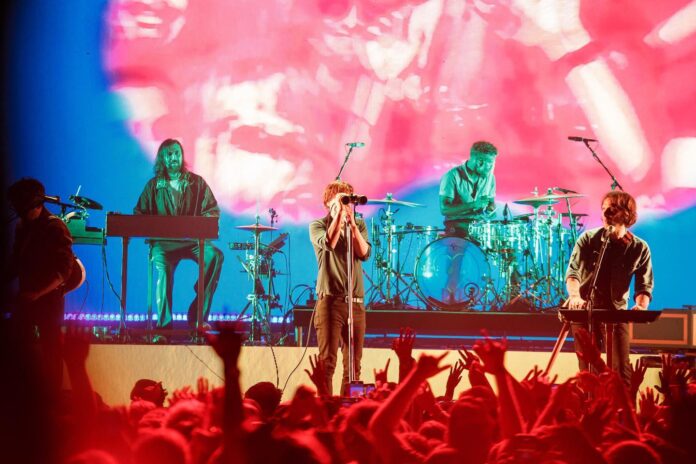The COVID-19 pandemic has been one of the biggest challenges for the music industry in recent history. It has disrupted the live music sector, which accounts for more than half of the global music revenue, and forced artists, venues, promoters, and fans to adapt to new realities. However, as vaccination rates increase and restrictions ease, there is hope and excitement for the return of live music in 2023.
According to a recent report by PwC, the global entertainment industry is set to rebound from a 5.6% decline in 2020 to a 6.5% growth in 2023, reaching $2.6 trillion in revenue. The live music segment is expected to bounce back from a 64.2% drop in 2020 to a 33.8% increase in 2023, reaching $28.4 billion in revenue.
But how will live music look like in the post-pandemic era? What are the changes and innovations that the music industry is implementing to ensure a safe and enjoyable experience for everyone involved? Here are some of the key trends and insights that will shape the future of concerts in 2023.
– Hybrid events: One of the most significant shifts in live music is the emergence of hybrid events, which combine physical and virtual elements to create a more accessible and diverse experience for audiences. Hybrid events allow artists to reach a wider and global fan base, while also providing an option for those who are unable or unwilling to attend in person. Hybrid events also offer more flexibility and creativity for organizers, who can leverage technology and data to enhance the production and engagement of their shows.
– Health and safety measures: Another major change in live music is the implementation of health and safety measures to prevent the spread of COVID-19 and other infectious diseases. These measures may include vaccine or test requirements, mask mandates, social distancing protocols, contact tracing apps, sanitization stations, ventilation systems, and capacity limits. These measures may vary depending on the location, size, and type of event, but they are essential to ensure the well-being of artists, staff, and attendees.
– Cost and personnel changes: A third change in live music is the impact of COVID-19 on the cost and personnel involved in organizing and delivering live events. Due to the loss of income and increased expenses caused by the pandemic, many venues, promoters, agents, managers, crew members, and artists have faced financial difficulties and layoffs. To survive and recover, they may have to adjust their pricing strategies, negotiate new deals, seek alternative sources of funding, or collaborate with other stakeholders.
– Festival culture: A fourth change in live music is the evolution of festival culture in the post-pandemic era. Festivals are one of the most popular and profitable forms of live music, attracting millions of fans and generating billions of dollars every year. However, festivals are also one of the most vulnerable and complex forms of live music, requiring large-scale planning, coordination, investment, and risk management. In 2023, festivals may have to adapt to new challenges and opportunities, such as changing consumer preferences, environmental sustainability, social responsibility, digital innovation, and competitive differentiation.
One example of a festival that is leading the way in adapting to the post-pandemic era is Coachella Valley Music & Arts Festival (Coachella), which is scheduled to take place in April 2023 after being postponed twice due to COVID-19. Coachella is widely regarded as one of the biggest and most influential music festivals in the world, featuring hundreds of artists across various genres and attracting over 250,000 attendees over two weekends.
According to a recent article by Grammy.com , Coachella is planning to make several changes for its 2023 edition, such as:
– Increasing its capacity from 125,000 to 140,000 per day
– Expanding its footprint from 600 to 700 acres
– Adding more stages, art installations, and amenities
– Enhancing its health and safety protocols, such as requiring proof of vaccination or negative test, providing rapid testing on site, and installing air filtration systems
– Offering a hybrid option for fans who cannot or prefer not to attend in person, such as live streaming, virtual reality, and interactive features
– Partnering with various organizations and initiatives to support social causes, such as racial justice, LGBTQ+ rights, mental health, and environmental sustainability
Coachella is also expected to feature some of the biggest names in music, such as Beyoncé, Kendrick Lamar, Billie Eilish, Ariana Grande, and The Weeknd. However, it may also face some competition from other festivals that are vying for the same artists, audiences, and sponsors.
According to a recent study by Sciendo , the biggest music festival in the world in 2023 is Tomorrowland, which is an electronic dance music (EDM) festival that takes place in Belgium every year. Tomorrowland is known for its spectacular production, diverse lineup, and loyal fan base. In 2023, Tomorrowland is expected to attract over 400,000 attendees over two weekends and generate over $100 million in revenue.
The study also ranked the top 10 music festivals in the world in 2023 based on various criteria, such as attendance, revenue, popularity, influence, and innovation. The ranking is as follows:
– Tomorrowland (Belgium)
– Coachella (USA)
– Glastonbury (UK)
– Lollapalooza (USA)
– Rock in Rio (Brazil)
– Ultra Music Festival (USA)
– Burning Man (USA)
– Primavera Sound (Spain)
– Sziget (Hungary)
– Fuji Rock (Japan)
The study concluded that music festivals are one of the most resilient and adaptable forms of live music, as they have proven to overcome various challenges and crises over the years. The study also predicted that music festivals will continue to grow and diversify in the post-pandemic era, as they offer a unique and immersive experience for fans and artists alike.
Live music is making a comeback in 2023 after a devastating year due to COVID-19. The music industry is adapting to the new normal by implementing hybrid events, health and safety measures, cost and personnel changes, and festival culture. These changes are aimed at creating a more accessible, safe, enjoyable, and sustainable experience for everyone involved in live music.







